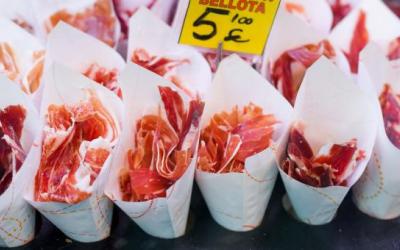Argentina: More bulls sent to fattening

 PIONEER MEIZHENG BIO-TECH (5 in1) JC1165 / Rapid tests for the determination of the residual amount of halofuginone, flavomycin, novobiocin, flunixin, dexamethasone / prednisolone in milk, whey
PIONEER MEIZHENG BIO-TECH (5 in1) JC1165 / Rapid tests for the determination of the residual amount of halofuginone, flavomycin, novobiocin, flunixin, dexamethasone / prednisolone in milk, whey PIONEER MEIZHENG BIO-TECH (5 in 1) JC0726 / Rapid tests for determining the residual amount of Bacitracin, ansamycins, clindamycin, spiramycin, florfenicol in milk, whey
PIONEER MEIZHENG BIO-TECH (5 in 1) JC0726 / Rapid tests for determining the residual amount of Bacitracin, ansamycins, clindamycin, spiramycin, florfenicol in milk, whey
The total cattle population is 1,809,319, the data shows. This is the highest figure since November last year, 5.7% higher than the same month a year earlier, and very close to the number of animals recorded in 2023, a period characterized by high levels of isolation caused by drought.
The climate this year is already very different from what it was then. Today, the restriction of freedom is not due to necessity, but rather due to the attractiveness of fattening on feedlots.
With calf/fat ratios very close to the historical average for this time of year (1.10 to 1.20) and corn prices at a purchase to feed cost ratio ofWith steer yields 15% below average (80 to 85 kg of fattened steer per ton of grain in March/April), feedlot numbers have started to rise.
Indeed, we are at the most favourable time of year to buy lightweight calves, as prices tend to fall as the winter season ends and supplies increase . According to DTe. According to SENASA, the number of calves transported in March for breeding/wintering was 1,022,745, up 24% from the 826,032 calves transported in February, and historical data suggests that deliveries should peak in April and May.
In fact, of the total number of animals currently kept in feedlots, the calves and heifers category accounts for about 676 thousand animals, an increase of 8% from a year ago; while the number of young bulls and heifers amounts to another 800 thousand animals, which is practically unchanged compared to last year's figures.
However, what is noteworthy from recently released SENASA data is the increase in feedlot steers. As of April 1, there were more than 200,000 steers in feedlots, up 44% from the previous month and 20% more than the 167,000 recorded in the same month last year.
Similarly, when we look at the expense categories reported by feedlots for the first three months of the year, we see how the number of steers leaving feedlots has steadily increased in recent years. From January to March of this year, feedlots sent about 255,000 steers to slaughter, up 40 to 50 percent from five years ago.
This behavior is largely explained by the fact that most of the animals enter the pens as young bulls, having spent most of their development in the pasture system. Indeed, the same trend can be observed when analyzing the arrival of this category in the pens: for the period from January to March 2025, about 103 thousand bulls were recorded, which is 5% more than last year, but 45% more than was recorded five years ago.
It is this latter figure that reflects the consolidation of wintering grazing systems, which are increasingly being introduced as a preliminary step to moving cattle into paddocks. (Source: BCR)
Read together with it:
- Низкое предложение и устойчивый спрос: в Аргентине растут цены на мясоЦены на говядину снова выросли, что отразилось на полках супермаркетов и в мясных магазинах. За последние две недели розничные цены выросли на 8–12%, а на некоторые популярные отрубы рост превысил 15% по сравнению с октябрем. Тем не менее, продажи остаются высокими: потребители продолжают покупать, принимая новые цены и закрепляя тенденцию, которая повторяется каждый год в конце года, когда спрос ...
- Китайский рынок мяса: консолидация, меры безопасности и проблема субпродуктов«Мы завершаем выставку CIIE в Шанхае, в целом хорошую выставку, где мы видим консолидированные цены, как это было с начала года, но в то же время рынок ожидает решения по защитной мере, определения которой должны быть даны в конце ноября», — сказал он Valor Agregado Agro. Лидер пояснил, что глобальная ситуация характеризуется «колебаниями на международном рынке, вызванными интенсивной геополитичес...
- Лучшие не только по молоку. Какие рекорды поставили в экспериментальной базе имени КотовскогоНовости темы Экспериментальная база имени Котовского известна далеко за пределами Узденщины благодаря высоким показателям, которых из года в год добиваются в хозяйстве. Лучшие результаты в районе агропредприятие показывает как по молоку и зерновым, так и по сахарной свекле. Страда этого года, проходившая не в самых простых погодных условиях, также стала рекордной. Хлеб – всему голова Весна 2.........
- Экспортные цены на уругвайскую говядину достигли рекордных значений в октябреЭто второй лучший показатель 2025 года после пика, достигнутого в августе. По предварительным данным INAC, на прошлой неделе экспортная цена составила 5350 долларов США. Данные INAC, которые показывают фактически выполненные поставки (в отличие от экспортных заявок, где указаны как отгруженные, так и неотгруженные товары), указывают на падение объёма экспорта мяса в октябре на 28% — до 3......

























































